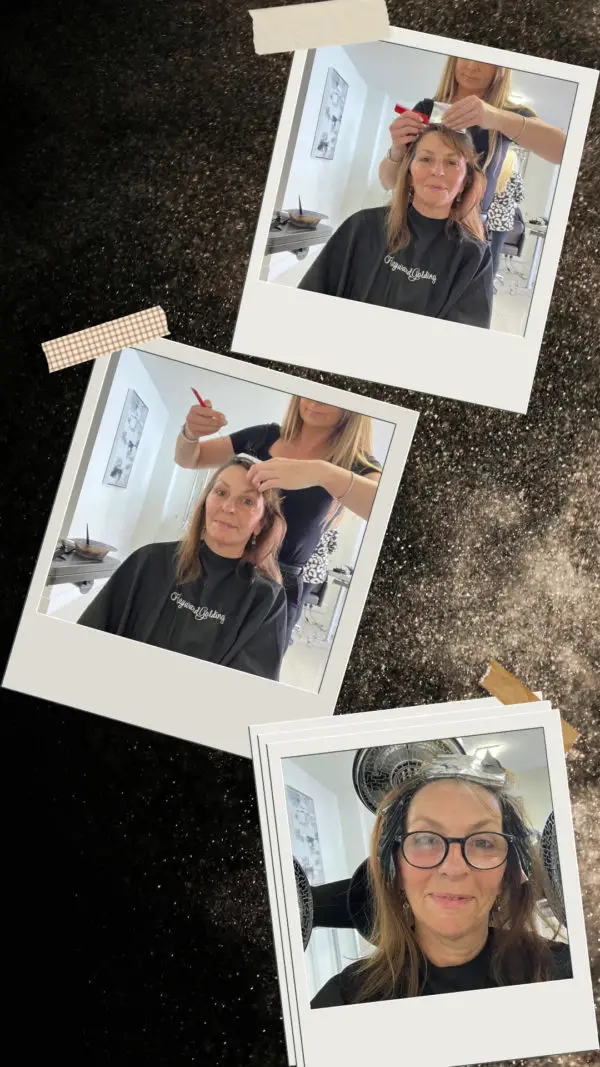Like age, service is structured in consciousness. That is, the quality of our service depends on our connection to pure awareness and to shadow awareness. Our stage of awareness determines how and why we serve. It colors our hidden motivations to heed the call or to deny the call.
If our ego’s agenda is to gain value, recognition, or power, and to fill an inner emptiness, we may unknowingly heed the call to serve in an effort to meet those needs. We will be outer directed, rather than self-reflective, and we won’t be responsible for our own internal experience. Instead, we will most likely see the world in black/white, right/wrong terms, so we will serve others in a dualistic way, projecting onto them what we cannot see in ourselves.
We may refuse to see our own helplessness. “You need help. I can help you.”
We may deny our uncertainty, identifying with a rigid belief system. “I’m certain that I’m right. You don’t know what’s going on.”
We may be blind to our own neediness or dependency. “You’re a victim, I can save you.”
This hidden motivation leads to an unconscious power shadow, an inferior/superior dynamic in which we will unconsciously identify with our role — the Doer, the Helper, the Fixer, the Savior. As we carry the Doer into the arena of service and seek validation for achieving goals, we may become identified with that power or influence and ignore our inner work, at our peril. Our ego needs may be met — to feel useful or superior. However, even as we wear the white hats, we will deny our own limits, perhaps one day acting out our own shadow issues around power, money, or sex.
In addition, we will not open to the depths of the receiver, blinded to his or her beauty and talent. And we will not meet soul to soul.
Instead, stuck in a role-based dynamic, we will grow attached to the results of our actions (“I succeeded or failed.”) and to how others see them (“You’re so generous.” “She doesn’t know how lucky she is to have you.”) In the shadow, we may unconsciously hope to maintain the original painful situation so that we can maintain our superior role of Helper to a Victim, Caregiver to a Patient, or privileged person to a disenfranchised person.
Many people who serve in this way suffer burnout or “compassion fatigue” from effortful overreaching and lack of self-care. They typically struggle with internal conflict, in much the same way as a workaholic — feeling fraudulent, fearing failure, disconnected from an internal source.
The same holds true for unconscious activism: When our ego needs to be right or superior, we project the shadow and create an Other, who carries those traits that we don’t see in ourselves — ignorance, entitlement, anger, prejudice. When we Boomers raged against “the Establishment,” we had valid critiques about war, materialism, and consumerism. But when we didn’t trust all those people, we disowned our own needs for security and stability.
Whether in service or activism, when we are disconnected from an internal source and from the soul in others, we engage in scapegoating and enemy making, which we see in stark relief today. In fact, some world leaders are using this very weapon of shadow-projection to create a terror of Otherness with Islamophobia, anti-Semitism, and fear of immigrants. In the extreme, they justify war, slavery, and genocide to dehumanize or eliminate the Other, such as during the Crusades, the Inquisition, the Holocaust. European settlers in America continued this dynamic when they dehumanized Native Americans and imported Africans to be slaves. Tragically, we see this in our own times in the detention of immigrants in border camps and the militarization of police against people of color.
Andrew Beath, founder of EarthWays Foundation, who has written about “conscious activism in the ecological epoch,” told me that the same process of creating Us/Them occurs in relation to nature. “We turn nature into an object and devalue its sacred beauty. Then we can rationalize our abuse of it and deny our interconnectedness, so that we can continue to pursue our self-interest.”
A key attribute of conscious activism, Andrew said, is “no enemy.” We need to move beyond the separate self-sense of ego and Other. “This is how we bring our spiritual development into activism.”
When I asked him how he has persisted for decades in environmental activism in the face our worsening crisis, he said, “My privilege brings responsibility. I live a life of purpose and meaning. Things may change, they may not. I’m positive, but not optimistic.”
I like what the Talmud says about this: “Do not be daunted by the enormity of the world’s grief. . . You are not required to complete the work, but neither are you free to abandon it.”
In the long term, if we wake up to our personal and collective shadow issues and do spiritual practice, we realize that what we seek is not “out there.” As we take the time to recover and self-reflect, we can reimagine our beliefs and values and redesign our lives to include service in a healthier mode. We can see the evolution of soul through service in these stages:
In the first stage, service carries us from an activity to meet our own hidden needs into a larger arena of personal and social evolution. We experience life flowing through us, rather than the ego’s need to control outcomes.
I learned, for example, during a course called “Waking Up to Our History” for Elders Action Network, that some White residents of Northern California are meeting with Native tribes to share their grief about how their own White ancestors treated Native Americans in the region. And they are seeking to make reparations by raising funds to buy land for native ceremonies.
Another White woman told us that, after training with Coming to the Table, whose mission is to heal the inter-generational wounds of racial injustice, she is working with a Black woman whose ancestors were enslaved by her own White ancestors. In these ways, both women face the truth of their histories, their shame and grief about it, and give back their service into the communities that were harmed, ending the Us/Them division and closing the circle.
At the next stage, we start to view the recipient of our giving as part of a larger system in which we are both embedded, both giving and receiving care, energy, and love. We can receive, breathing in, and give, breathing out. We let go of the ego’s hidden motives and feel held in a larger field that is both whole and broken, both perfect and in need of repair.
Now, we begin to see external circumstances as mirrors of our inner world. We see how our own shadow issues are shaping our service, and we can be accountable for them by doing shadow-work. As we center ourselves in silence and witness these inner voices, we can reclaim our projections onto others. Poor/wealthy, needy/helper, receiver/giver dissolve. And, ideally, we can attune to our own inner guidance, remembering that we are not the Doer. We are a soul in service.
Finally, at the next stage, giver and receiver are both a reflection of the collective unconscious, the soul of the world. I am not only serving another individual as that person serves me in the larger field. But that field of consciousness is shaping us and being shaped by us because we are nodes in Indra’s net, an image from Hindu myth that reflects findings from modern physics about the vast interdependence of all things. Indra’s net, like a cosmic spider web, is an infinite network of interpenetrating points. At each node of the net, a jewel glimmers, holographically reflecting all the other jewels. This non-dual stage of sacred service honors this vast interconnection of all living things.
My brother-in-law, Stephen Schuitevoerder, shared a startling personal experience of this interconnection. A psychologist, Stephen is a specialist in process-oriented psychology, which applies inner work to conflict situations around the world. He has brought it to the U.N., corporations, and educational settings.
Stephen’s Jewish parents immigrated as children in the 1920’s from Europe to South Africa. When he and his brother, my husband, were growing up, the family did not speak of the Holocaust. But, in 1999, Stephen visited the Holocaust Museum in Washington, D.C., and was shocked to see page after page of people who had died in the camps with his unique last name — Schuitevoerder. In his rage and grief, Stephen began to study his genealogy and find more information about the men, women, and children in his lineage who were lost. He became furious with all of Europe for its participation in anti-semitism and collusion with Nazism.
After Stephen returned home, he was in a printing shop when he heard an older man with a German accent and realized that he could have been a soldier in WWII. He approached the man to challenge him about the war. The man replied that he was from Austria, then moved to Germany, (Stephen was holding his breath. . .), until they let him out of a concentration camp.
“I recall the blood draining from my face,” Stephen said, “as I realized he was Jewish. It took a while for me realize what had happened. I had taken a specific quality, the man’s accent, and generalized it to mean that he was a Nazi. I saw that this behavior of generalizing was what Hitler had done to the Jews. They had projected onto a whole group and persecuted them. I, too, had the ability to generalize and attack. It changed my perspective and refined my interaction with people. And this experience woke me up to the importance of doing inner work as a precursor to service.”
Stephen shared this experience with a large group of his students. The next morning, David, a German man in the group, mentioned that Stephen’s story was difficult for him. He spoke about the suffering of the German people during that time. Stephen approached David and they hugged. He told me that he felt a deep sensation in his heart as he realized that this was not only Stephen and David hugging each other but a Jew and a German embracing, reconciling the agonies of history.
Afterward, Stephen sat down and began to sob, allowing the torment of his ancestors to move through him. Then this wave expanded to include the agony of the German people, the splitting of their nation, and the violations done to them during the war. Then the wave expanded to include all human beings as he realized that we all hold immense suffering in our bodies, in our DNA. We all hold the terrible pain of our ancestors struggling to survive.
The next day, a woman from the group approached Stephen. On the day that he had done this inner work in front of the group, she had received a message on her neighborhood Facebook page. A man had taken a photo in her neighborhood of three commemorative stones that were laid in the street. Each one had a brass plate engraved with the name of a person killed in the Holocaust, their date of birth and death, and their place of death. The woman observed candles and candy around the stones, which she had never seen before. So, she took a photo and posted it to the neighborhood page. The names on the plaques: Schuitevoerder. Three people, Stephen’s ancestors. All connected by an invisible thread that bind us all.
Inner work/outer work. Individual soul/Soul of the world.
Find the full book here.
Related Posts
#Shadow #Side #Service #Activism



























